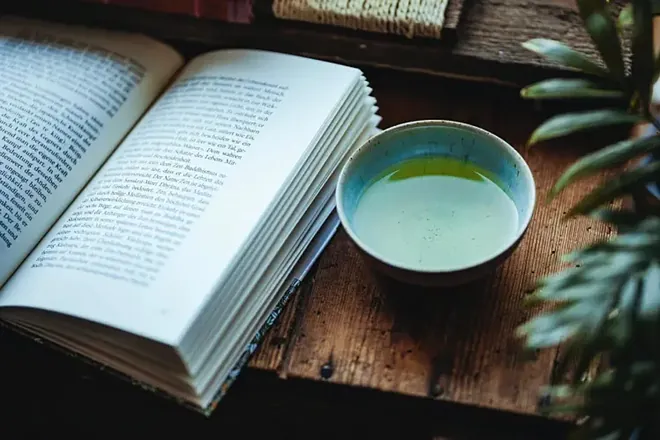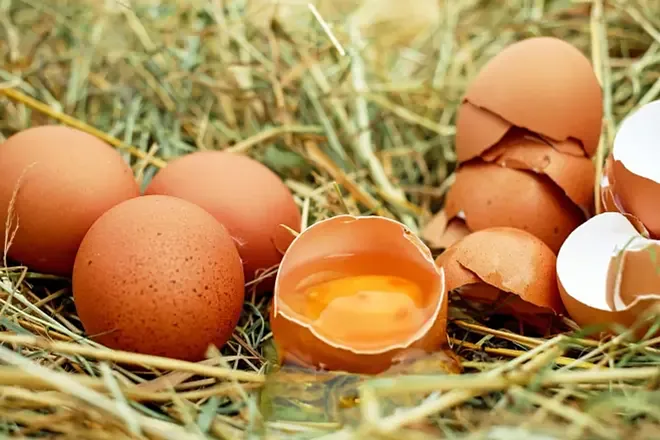Hojicha tea, a lesser-known member of the Japanese green tea family, is rapidly gaining popularity as a natural, low-caffeine alternative to matcha. Originating from Japan, this roasted green tea offers a unique flavor profile and health benefits that make it a versatile choice for tea enthusiasts. Unlike the vibrant, powdered matcha, hojicha’s distinct roasting process gives it a milder, caramelized taste and a host of wellness properties. Let’s explore why hojicha tea is becoming a global hit, how it compares to matcha, and practical ways to incorporate it into your daily routine.

What is Hojicha Tea?
Hojicha is a Japanese green tea made from roasted tea leaves, stems, or twigs, typically from the Camellia sinensis plant. The roasting process sets it apart from other green teas like matcha or sencha, giving it a warm, toasty flavor with notes of caramel, nuts, or even cocoa. This process also reduces its caffeine content, making it a gentler option for those sensitive to stimulants.
Key Characteristics of Hojicha:
- Origin: Japan, often produced in regions like Kyoto or Uji.
- Appearance: Brownish leaves or powder (less vibrant than matcha’s bright green).
- Flavor: Smooth, nutty, and caramelized, with less bitterness than other green teas.
- Caffeine Content: Low, around 8 mg per 12-ounce cup, compared to matcha’s 38–178 mg.
- Preparation: Brewed as loose-leaf tea or ground into a powder for lattes and recipes.
Hojicha vs. Matcha: A Side-by-Side Comparison
While both hojicha and matcha belong to the Japanese green tea family, their differences in preparation, flavor, and health benefits cater to distinct preferences and needs. Here’s a breakdown:
| Feature | Hojicha | Matcha |
|---|---|---|
| Preparation | Roasted leaves, stems, or twigs | Finely ground green tea leaves |
| Caffeine Content | Low (~8 mg per 12 oz) | High (38–178 mg per 12 oz) |
| Flavor | Nutty, caramelized, coffee-like | Grassy, slightly bitter, umami-rich |
| Antioxidants | Moderate (reduced by roasting) | High (rich in catechins like EGCG) |
| Best Time to Drink | Afternoon or evening (low caffeine) | Morning or mid-day (energy boost) |
| Health Benefits | Anti-fatigue, digestive aid, relaxation | Energy, focus, cardiovascular health |
Why Choose Hojicha Over Matcha?
- Low Caffeine: Ideal for children, the elderly, or those avoiding caffeine jitters.
- Milder Flavor: Appeals to those who find matcha’s grassy bitterness too intense.
- Evening-Friendly: Promotes relaxation without disrupting sleep, unlike matcha’s high caffeine content.
- Digestive Benefits: Helps soothe stomach discomfort and bloating, especially after meals.
Why Choose Matcha Over Hojicha?
- Energy Boost: Combines caffeine with L-theanine, an amino acid that promotes calm, focused alertness without the crash associated with coffee.
- Antioxidant Powerhouse: Rich in catechins like EGCG, which may support cardiovascular health and reduce inflammation.
- Versatility: Perfect for smoothies, lattes, and desserts due to its fine powder form.
Health Benefits of Hojicha Tea
While matcha is celebrated for its high antioxidant density, hojicha offers unique benefits that make it a compelling alternative. The roasting process may reduce some bioactive compounds, but it enhances other properties, making hojicha a gentle yet effective wellness drink.
Key Benefits of Hojicha:
- Low Caffeine for All Ages: With only 8 mg of caffeine per cup, hojicha is suitable for kids, seniors, or anyone looking to cut back on caffeine without sacrificing flavor.
- Digestive Support: The roasting process enhances compounds that may relieve stomach upset and bloating, making it an excellent post-meal drink.
- Anti-Fatigue Properties: Some studies suggest hojicha may combat fatigue, offering a light energy lift without the intensity of matcha or coffee.
- Promotes Relaxation: Its low caffeine content and soothing flavor make it ideal for winding down in the afternoon or evening.
- Antioxidant Content: While lower than matcha, hojicha still contains antioxidants that support overall health, including catechins and polyphenols.
Practical Tip: Sip hojicha after dinner to aid digestion or as a calming evening ritual. Its nutty flavor pairs well with light snacks like rice crackers or fruit.
How to Enjoy Hojicha Tea
Hojicha’s versatility makes it a fantastic addition to both traditional tea rituals and modern culinary creations. Here are some practical ways to incorporate hojicha tea into your routine:
1. Traditional Brewing
- What You Need: Loose-leaf hojicha, hot water (175–185°F), teapot or strainer.
- Steps:
- Add 1–2 teaspoons of hojicha leaves to a teapot.
- Pour 8 oz of hot water (not boiling, to preserve flavor).
- Steep for 1–2 minutes.
- Strain and enjoy hot or chilled.
- Tip: Adjust steeping time for a stronger or milder flavor.
2. Hojicha Latte
- What You Need: Hojicha powder, milk (dairy or plant-based), sweetener (optional).
- Steps:
- Whisk 1 teaspoon of hojicha powder with 2 oz of hot water until smooth.
- Heat 6 oz of milk and froth it.
- Combine the hojicha mixture with the milk and add sweetener if desired.
- Tip: Use oat or almond milk for a creamy, nutty complement to hojicha’s flavor.
3. Culinary Uses
- Baking: Add hojicha powder to cookies, cakes, or muffins for a subtle, toasty flavor.
- Smoothies: Blend hojicha powder with banana, almond milk, and a touch of honey for a refreshing drink.
- Ice Cream: Infuse hojicha into homemade ice cream or sprinkle the powder over vanilla ice cream.
- Tip: Start with small amounts (1 tsp per recipe) to balance the flavor.
4. Cold Brew Hojicha
- What You Need: Loose-leaf hojicha, cold water, pitcher.
- Steps:
- Add 1–2 tablespoons of hojicha leaves to 1 liter of cold water.
- Refrigerate for 6–8 hours.
- Strain and serve over ice.
- Tip: Garnish with a slice of lemon or mint for a refreshing twist.
Why Hojicha is Gaining Popularity
Hojicha’s rise as a natural drink trend stems from its unique combination of flavor, health benefits, and accessibility. Here’s why it’s capturing attention worldwide:
- Appealing Flavor: Its caramelized, coffee-like taste appeals to those who dislike the bitterness of traditional green teas.
- Low Caffeine Appeal: Perfect for health-conscious consumers seeking caffeine-free or low-caffeine options.
- Versatility: Works as a hot tea, iced drink, latte, or ingredient in recipes, making it adaptable to modern lifestyles.
- Cultural Appeal: As interest in Japanese culture grows, hojicha rides the wave of matcha’s popularity while offering a distinct alternative.
- Sustainability: Often made from later harvests or stems, hojicha is a resource-efficient tea, appealing to eco-conscious consumers.
Practical Tips for Choosing and Storing Hojicha
To get the most out of your hojicha experience, follow these guidelines:
Choosing High-Quality Hojicha:
- Look for Authenticity: Opt for hojicha sourced from Japan, ideally from reputable regions like Kyoto or Uji.
- Check the Form: Choose loose-leaf for traditional brewing or powder for lattes and recipes.
- Read Labels: Ensure no additives or artificial flavors are included.
- Organic Options: Consider organic hojicha to avoid pesticides and support sustainable farming.
Storing Hojicha:
- Airtight Container: Store in a sealed container to preserve freshness.
- Cool, Dark Place: Keep away from heat, light, and moisture to maintain flavor.
- Use Within 6 Months: Hojicha’s roasted flavor fades over time, so consume it promptly for the best taste.
Potential Drawbacks of Hojicha
While hojicha is a fantastic option for many, it’s worth noting a few considerations:
- Lower Antioxidant Content: The roasting process reduces catechins compared to matcha, so it may offer fewer cardiovascular benefits.
- Milder Energy Boost: If you need a strong pick-me-up, matcha or coffee may be more effective.
- Availability: Hojicha may be harder to find than matcha in some regions, though online retailers are making it more accessible.
Hojicha in Context: A Balanced Green Tea Routine
For green tea enthusiasts, hojicha and matcha can complement each other beautifully. Here’s how to balance them in your daily routine:
- Morning: Start with matcha for a focused energy boost to kickstart your day.
- Afternoon: Switch to hojicha for a gentle, calming pick-me-up that won’t disrupt your sleep.
- Evening: Enjoy hojicha as a digestive aid after dinner or a relaxing nightcap.
- Special Occasions: Use hojicha powder in desserts or lattes for a unique twist at gatherings.
Hojicha tea is carving out its place as a natural drink hit, offering a low-caffeine, flavorful alternative to matcha. Its nutty, caramelized flavor, digestive benefits, and versatility make it a standout choice for tea lovers and newcomers alike. Whether you’re sipping it hot, blending it into a latte, or experimenting with it in recipes, hojicha brings a comforting, health-conscious option to the table. As interest in Japanese green teas grows, hojicha is poised to become a staple in wellness-focused kitchens worldwide.






